Seasons – Spring 2015
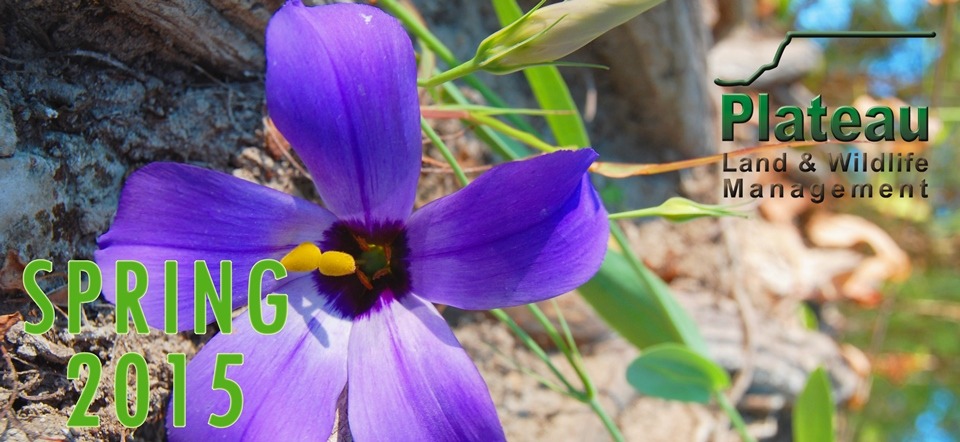
From the Plateau Land & Wildlife Management Team,
Our clocks have sprung forward, the birds are singing and the trees and grass are beginning to show signs of coming back to life. Creeping in slowly, but yes, another beautiful Texas spring is upon us. We all know that spring showers and warmer weather will be ushering in all the little flutters of life that we enjoy so much. The spirit of the spring season is reflected in this issue of Seasons, in which we highlight several opportunities to improve and enjoy your land during this beautiful time of year.
As the weather warms up and animals become more active, now is the perfect time to begin gearing up for the upcoming year. As the saying goes, April showers bring May flowers. Thus, this is the time to consider the addition of such products as water tables to your property, as it will allow wildlife to get used to having them around the rest of the year, especially during the upcoming, predicted hot summer months. On that same note, if you have ever thought about installing bird feeders, turkey feeders or nest boxes, now would be the time for those as well.
Spring is also peak breeding and migratory season for birds. With the increased bird activity ‘tis the season to conduct spring breeding bird surveys. These surveys will provide you the opportunity not only to learn the diversity of species on your property but also give you the ability to monitor the long-term trends of species composition and abundance.
In this issue, we will provide you with an important reminder about imported red fire ant control, a checklist for guidance on which activities to focus on this season and information about Ecolab and our service agreements.
We hope this issue of Seasons will help jump-start your celebration of spring, and if there’s any way that Plateau can help you protect, enhance, or better enjoy your land during this special season, just give us a call. We’ll be here when you need us.
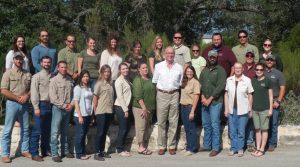 Until next season and Seasons,
Until next season and Seasons,
The Plateau Team
Table of Contents
Golden Cheeked Warbler
Spring Wildflowers
Spring 2015 Wildlife Management Activities Check List
2015 Cowbird Trapping Update
“Property Taxes and How to Read Your Notice of Appraised Value”
Our Sister Company, Braun & Gresham, PLLC., Announces Spring Webinar Series
Rural Land Pricing Strategies Made Easy
Golden-Cheeked Warbler
By Romey Swanson, Senior Wildlife Biologist
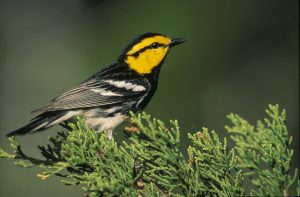 Golden-cheeked Warblers (GCWA) typically arrive within their Hill Country haunts during mid-March. I found my first of the season during a property visit in Spring Branch (Comal County) on March 16th this year.
Golden-cheeked Warblers (GCWA) typically arrive within their Hill Country haunts during mid-March. I found my first of the season during a property visit in Spring Branch (Comal County) on March 16th this year.
The Golden-cheeked’s scientific name, Setophaga chrysoparia, translates from Latin to mean golden cheek moth eater; moth eater describing the genus which includes most warblers. This federally endangered songbird is an attractive member of the wood-warbler family (Parulidae) and is Texas’ only endemic breeding songbird, meaning that it only nests and raises chicks here! Golden-cheeked Warblers are overwhelmingly reliant upon that special Hill Country habitat association of mature juniper-hardwood forests, typically with high levels of canopy cover, a diverse deciduous component, and occurring along moderate to steep slopes.
Prime GCWA habitat is attractive and diverse and represents some of my favorite wooded Hill Country conditions. These dense woodlands are often old-growth occurring with an abundance of large attractive juniper, the kind that ought to be appreciated for the native trees that they are instead of the noxious shrubs we regularly battle. The best GCWA habitat will hint at creeks and springs along valleys and ravines lined by moist shaded slopes. Pockets of rich dark soil alternate with exposed limestone ridges and fractures.
Historically, this species suffered as large areas of woodland were cleared throughout central Texas. The primary intent of this conversion was to increase the area of productive grasslands for livestock production. These intentions sorely misjudged the importance of the woodland structure in stabilizing the highly erodible underlying soils. Additionally, a terrible toll was taken on the reproductive success of GCWA by increasing populations of Brown-headed Cowbirds (BHCO). The female BHCO is a nest parasite which routinely locates the nests of other breeding birds with the intent of removing one or more eggs (or chicks) and depositing eggs of her own. After hatching, the cowbird chick grows quickly and usually dominates the surrogate parent’s consideration; all of this to the detriment of the biological chicks.
Painting a bleak picture for the future of Golden-cheeked Warblers, Harry C. Oberholser, in his seminal work, The Birds of Texas*, opined “[the golden-cheek] and its cedar brakes are unlikely to reach the twenty-first century alive, but then, who is?”
Populations throughout the Hill Country now appear relatively stable but are continually challenged by the development of rural lands. Habitat loss, fragmentation, and degradation are generally considered to be the greatest ongoing challenges to the viability of the species, particularly along the eastern edge of the Edward’s Plateau. The Endangered Species Act (ESA) provides some protection, particularly through mitigation of those development projects funded by the Federal Government, but the ESA protection can’t alone assure the perpetuity of the species, particularly in a state 95% privately owned.
The progressive fragmentation of regional ecosystems increasingly contributes to the dynamic challenges of wildlife management. It is well documented that the average Hill Country property is decreasing in acreage as more large ranches are carved up into inheritances, large tract subdivisions, or hobby ranches. Smaller farms and ranches don’t necessarily present an insurmountable conservation challenge but the resultant mixed management of these smaller parcels, often variable and without coordinated conservation goals, create substantial management challenges. This is particularly true with regard to the management of juniper woodlands and will take a combination of education, cooperation, and landscape-scale planning that warrants the question every landowner should consider, “How does the stewardship of my land interact with, or contribute to, the surrounding ecological landscape?”
*The Birds of Texas was published posthumously in 1974 and represents a lifetime of work occurring over the first half of the 20th century.
Back to TopBack to Top
Spring Wildflowers
By Shane Kiefer, Director of Ecological Services
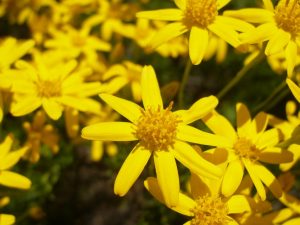 This spring is shaping up to be a fantastic wildflower season, despite the ongoing and record-setting drought. You might wonder how flowers can do so well in the middle of such a dry spell that has most of Texas wondering whether we will have enough water to drink. Most of our favorite spring wildflowers are cool-season annuals.
This spring is shaping up to be a fantastic wildflower season, despite the ongoing and record-setting drought. You might wonder how flowers can do so well in the middle of such a dry spell that has most of Texas wondering whether we will have enough water to drink. Most of our favorite spring wildflowers are cool-season annuals.
“Cool-season” means they grow during the late fall-spring stretch and “annual” means they complete their entire life cycle (seed to seed) in a single growing season. They generally have small, weak root systems and put as much energy as possible into flowering and producing seeds every year, since they only get one shot. Their seeds, which can lay dormant for years, carry their genes into the future. This is a popular lifestyle for plants. Searching the Lady Bird Johnson Wildflower Center’s Native Plant Database for annual herbs (we call them forbs) that bloom from March-June results in 642 hits. Many of these plants germinate in the late fall and overwinter as rosettes (those are all the little flat, green weeds you see hidden in the grass during the winter). This gives them a jumpstart when the weather warms in the spring.
Perennial plants, on the other hand, live for more than 2 years, producing new growth each year from existing roots or other vegetative material. As such, some perennials may not produce seeds every year as they put a lot of energy into producing roots and stems that will carry them through. These plants put a lot of energy into keeping themselves alive, with the hopes of producing offspring year after year when conditions allow.
What makes this year so great for cool-season annuals is above average rainfall during key months in 2014 and early 2015. Last spring saw above average rainfall in the Austin and San Antonio areas. That means there should have been good seed production from the plants that were able to make it. More importantly, since September 2014, Austin has seen 3 months of above average rainfall (including an notoriously wet October) and Bryan/College Station has seen 4 months of above average rainfall. South Texas has been a little drier with only September and January above average, but those rains are important months for spring wildflowers.
The fall rains let our spring wildflowers germinate. I personally saw a lot of bluebonnet rosettes over the winter. The late winter rains keep soil moisture high so the plants can take off when the timing is right. The timing of these rains is almost as important as the amount. They are not competing with a lot of other plants for moisture since most everything else is dormant, but they have shallow roots, so they need moisture near the surface.
I encourage you to get out on your property to enjoy what should be a colorful spring thanks to some well-timed rains. While you do, you can marvel at the ability of nature to take advantage even during a record-setting drought. Droughts are nothing new in Texas (or as a topic for Seasons), and I will leave you with a reminder that healthy, well-managed lands are equipped to handle them much better than overused and abused properties. So get out, take pictures, learn to identify some new plants, and let us know whenever we can be of service.
Back to TopBack to Top
Spring 2015 Wildlife Management Activities Check List
By Kameron Bain, Business Development Manager
Spring is here! The Hill Country is beginning to wake up and come back to life. Soon the grass will be greener, the trees will start to bloom and all our favorite creatures will start to reappear. There are also a lot of fun wildlife management activities to check off your list in spring. With longer days and enjoyable temperatures, spring is one of the best times of year to check off some of your wildlife management to-dos!
- Nest Boxes & Supplemental Shelter- The spring birds are starting to arrive so you need to clean out your nest boxes ASAP
- Predator Control
- IRFA – It is predicted that imported red fire ants will be very active this spring
- Brown-headed cowbirds during breeding bird season
- Erosion Control
- Supplemental water
- Spring Census Breeding Bird Census
- RE-Seeding native grasses
Back to TopBack to Top
2015 Cowbird Trapping Update
By Shane Kiefer, Director of Ecological Services
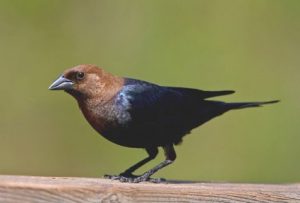 If you are engaged in trapping brown-headed cowbirds as part of your management plan it is important you are aware of some changes made by the US Fish and Wildlife Service (USFWS) for 2015. They have revised the depredation order that makes it legal for private citizens to trap and kill cowbirds. Cowbirds are a native species and protected under federal law, so any control must be conducted under the authority and conditions listed in the depredation order.
If you are engaged in trapping brown-headed cowbirds as part of your management plan it is important you are aware of some changes made by the US Fish and Wildlife Service (USFWS) for 2015. They have revised the depredation order that makes it legal for private citizens to trap and kill cowbirds. Cowbirds are a native species and protected under federal law, so any control must be conducted under the authority and conditions listed in the depredation order.
Important changes include:
- Traps must be checked every day that they are deployed so that healthy non-target birds can be released immediately.
- Any injured, non-target birds must be delivered to a federally-permitted wildlife rehabilitator if one is located within 1 hour or less of the trap site. If no permitted rehabilitator is within 1 hour you may euthanize injured non-target birds unless they are a federally-listed endangered, threatened, or candidate species. Listed species must be delivered to the nearest rehabilitator and reported to USFWS.
- You must submit an annual report to USFWS that includes any non-target captures and cowbirds taken. Reports are due by January 31st of the following year.
- If you are shooting cowbirds, you must use non-toxic ammunition (no lead) unless you are using an air-rifle.
The federal register entry with the revisions can be found here.
Texas Parks and Wildlife has updated their guidelines and training to reflect the changes. The updated guidelines can be found here.
Back to TopBack to Top
Property Taxes and How to Read Your Notice of Appraised Value
By Cassie Gresham
It is a very busy time at our office right now – it is property tax season. While most landowners know that May 1st is the deadline to submit your open space applications for agricultural, wildlife management, timber, and Ecolab, they might not also realize that this the time to review your Notice of Appraised Value and protest your taxes. Here are a few tips to follow:
- Don’t forget to refile your open space valuation application – If you purchased property between April 30, 2015 and April 30, 2016, you need to reapply for the open space valuation on your property. This also applies if you transferred your property to an entity or trust.
- Review your Notice of Appraised Value – you should be looking to make sure that your open space valuation is in place and your market value isn’t too high.
- Don’t miss the deadline to protest – the Notice of Appraised Value will have the deadline to protest and it is typically 30 days from the date you receive your Notice.
- Don’t miss your Appraisal Review Board hearing – you are given only one opportunity to reschedule the hearing, so don’t miss your opportunity to make your case.
- Don’t miss your opportunity to appeal the ARB’s ruling – you have 60 days from the date you receive your ARB notice to appeal to District Court.
There are many, many other tips to discuss. Join me on Friday, April 10 at noon where I will be providing information about the property tax process, including how to protest, how to present your case to the appraisal review board hearing and answering your questions. You can register for this webinar here.
Back to TopBack to Top
Our Sister Company, Braun & Gresham, PLLC., Announces Spring Webinar Series
By Ryan Swartz
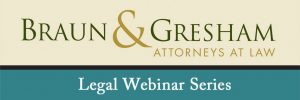 Plateau is proud to announce our sister company Braun & Gresham will be hosting a 2015 spring webinar series, kicking off on April 2, 2015 with The Importance of Updating Your Estate Plan with attorney Margaret Menicucci. The upcoming spring will feature webinars topics from Understanding Your Property Taxes and Notice of Appraised Value to Water Rights and Rural Land and much more.
Plateau is proud to announce our sister company Braun & Gresham will be hosting a 2015 spring webinar series, kicking off on April 2, 2015 with The Importance of Updating Your Estate Plan with attorney Margaret Menicucci. The upcoming spring will feature webinars topics from Understanding Your Property Taxes and Notice of Appraised Value to Water Rights and Rural Land and much more.
Please click here to learn more about the entire webinar schedule.
Back to TopBack to Top
Rural Land Pricing Strategies Made Easy
The Sales Comparison Approach by Craig Bowen, Managing Partner of Plateau Land Group
You have decided to sell you rural property. It may be a home on acreage, an equestrian estate, a recreational treasure… rural land comes in many shapes and sizes. What is consistent in this market is that an owner usually has deep ties to his property. Maybe he grew up farming it with his father or learned how to ride a horse in the old round pen behind the barn. Maybe she learned to hunt with her grandfather or tended the chickens or garden for her family as a child.
No matter the history of the ownership or the reason for the sale, there is usually a lot of emotion involved in selling Texas land. Perhaps the most difficult aspect of the sale (for the Seller and oftentimes his or her Realtor®) is separating the emotion and perceived value from the methodical pricing of the property. It is a harsh but real truth that most buyers do not carry the same emotional attachment to a property as the seller, and thus it must be priced according to what it is worth in the current market, not what the seller “has in it” from an emotional or perceived value perspective. Pricing a property correctly can mean a seamless transaction with a win-win for the buyer and seller and, unfortunately, bad pricing can lead to seller’s remorse about leaving money on the table (priced too low) or unacceptably long sales cycles (priced too high).
Indeed, the pricing strategy must be based on empirical data which a savvy Realtor® can glean from the market and then apply to the subject property. There are several ways to gather such data, from basic knowledge of the area and rural land in general, to looking at comparable properties which have sold in a given area over time, to simply hiring an appraisal and using the appraisal number as the list price.
The Sales Comparison Approach (SCA) is the most popular pricing approach in most Texas markets because of the high percentage of recreational or otherwise non-income-producing property. The SCA takes into account recent comparable sales in the area and then draws a comparison between those sales and the subject property. The price of the property is then determined by how closely each comparable compares to or “matches” the subject property.
Location, size, and human use amenities such as houses, barns, and road systems are obvious factors to consider when making property comparisons within the SCA. Other factors like type and quality of surface and well water, type and quality of fencing, and ecological factors such as plant diversity and topography can also weigh heavily in the Sales Comparison Approach.
Market trend data such as Active Days on Market (ADOM) and actual sales price as compared to list price should be considered, though a trained Realtor® or appraiser will have easier access to this information than most sellers. The top three to five most comparable properties should be assigned a “weighted value,” a number from .01-.99 based on similarity to the subject property, and these weights are then multiplied by the sales price for the respective comparables. Adding these three to five solutions together can then give a Realtor® a rough suggested list price. It should be noted that assigning these weighted values is a subjective process, so large initial data sets and lots of practice are necessary to achieve the best results.
A typical formula might look something like this:
Comparable A = $4,500 / acre, weighted at .15 similarity value = $675 / acre weighted value
Comparable B = $6,000 / acre, weighted at .35 similarity value = $2,100 / acre weighted value
Comparable C = $7,000 / acre, weighted at .25 similarity value = $1,750 / acre weighted value
Comparable D = $6,500 / acre, weighted at .25 similarity value = $1,625 / acre weighted value
= 1 = $6,150 estimated sales price
If the Comparables used in the SCA came from sold comparables, that is, the properties have already closed and the data is from sales price and not list price, then the SCA solution is a best guess for a sales price. (If the data came from much less accurate active market comparables, then the SCA solution is a best guess for a list price). After evaluating this price against several comparables, a Realtor® can make an educated decision in advising the client to list the property very close to this sales price in a weak market or for a shorter sales cycle (less Active Days on Market), or list the property somewhat higher in a strong market or when timeline to sell is not critical. The Realtor® can compare prices throughout the discussion to the Active Days on Market data, even estimating ADOM based on similarly-priced properties geographically near the subject property.
Even with a good data set and experience pricing rural land, significant inferences must sometimes be made to reach a sensible list price. For example, if most of the comparables are raw land sales and the subject features luxury home, some value must be given to the home and adjustments made to the pricing strategy. Specialty properties such as equestrian estates, managed hunting ranches, and very large or very small acreage must be priced according to the market demand for that type of property in that specific geographical area, not just by adding the land value and some factor of improvement value (improvements are hardly ever valued at replacement cost).
Pricing is about half art and half science. It is a team effort between a Realtor® and a seller. It takes understanding about the seller’s emotions from the Realtor® and an acceptance of a certain level of empiricism and methodology from the client. When coupled with a great marketing plan, pricing a property just right is the absolute best sales tool there is, and the Sales Comparison Approach is a valuable method to get the price just right.
Back to TopBack to Top








Sorry, the comment form is closed at this time.